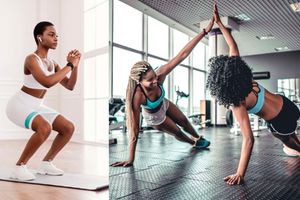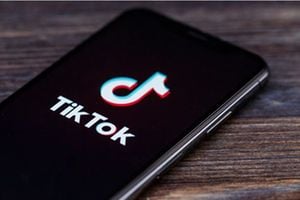
With the number of influencers increasing with each passing day, reinvention has been a necessity to stay ahead of the pack.
A growing number of Kenyans are pursuing side hustles or main jobs on social media. Some have become accidental stars, garnering a huge following that has attracted companies that are hiring them as social media influencers, who pitch their products on social media.
Some have few followers yet they strike international deals.
To an outsider, it looks like an easy job; you post a video, you are seen, and companies start courting you.
So what do Kenyan brands consider when selecting influencers?
Before an influencer is contacted for a job, marketing agencies conduct a map-out, which is presented to a client.
“From the map-out, there are always three options that we present to the client about the influencers for consideration. Those who are good at creating brand awareness, sales conversions, and engagements,” says Rachel Mwangi, a public relations and marketing consultant who previously worked for an agency that helped recruit influencers for corporates.
It is no longer about looking at how many followers an influencer has, as was the case before. With the number of influencers increasing with each passing day, with one in four Gen-Zers saying they plan to become an influencer celebrity, according to a recent McKinsey study, reinvention has been a necessity to stay ahead of the pack.
Influencing marketing managers have also had to up their game in how they source out influencers.
“For instance, these days, a lot of multinational brands prefer influencers who do not have so many brands attached to them —some sort of exclusivity — unlike many local brands who do not care,” says Ms Mwangi.
“Multinationals are very selective of who they pick. They are also more likely to consider the feel of an influencer’s page. It should have a specific mood board that is appealing. If your page looks like a marketplace, you don’t get the job,” she explains.
Skin tone and body type are the latest criteria.
“Lately, one’s skin tone and body type have also become a factor of consideration for multinationals. When you think about it, you will realise some campaigns in Kenya have influencers who almost look alike,” Ms Mwangi adds.
She cites the example of Sharon Mundia, who has about 382,000 followers on Instagram and 16,600 TikTok followers, less than many other influencers in Kenya.
“Someone like Sharon will be taken to New York Fashion Week, and you might wonder why not others who probably post more than her. But look at her style, her skin tone, her body type, and even just how she speaks. Those elements matter,” Ms Mwangi explains.
Lifestyle is another aspect. For instance, how an influencer lives his/her life, often posted on social media, who one hangs out with, and where they hang out also count.
This, according to Ms Mwangi, explains why you will see certain influencers with large followings never getting certain brands, which end up in the hands of influencers with fewer followers.

How an influencer lives his/her life is a key factor for some brands and companies.
“A good example is Nelly Mwangi of Geekon Fashion. Do you know why Nelly, may get a luxury gig by say Louis Vuitton and not a comedian who has 1.5 million followers? It’s because of how she lives her life online. Luxurious. You will never see her with a lot of local brands, yet she has less following (62,000).”
Ms Mwangi says multinationals have also invested in developing tools that help them with screening their ideal influencers to work with in respective countries worldwide.
“A multinational will contact an agency with an already-existing list of potential influencers from their screening, and so your job as an influencer marketing manager is to contract and assign them the job from the client and do the review and analysis,” she adds.
Muthoni Wachira-Musei, a brand and communication specialist, also agrees with Ms Mwangi that the number of followers no longer really matters when selecting influencers.
She points out brand surveys as another key factor in determining which influencer gets the job for a particular brand.
“Brand surveys give you feedback from the consumers on the type of influencers they are keen on. This then helps you to zero in on specific influencers based on the target market of your brand and profile them. The next step is to contact them and analyse the back end of their social media accounts," Wachira-Musei says.
"When I worked with Jalang’o to promote some Chinese electronics company, it was because he was popular in different parts of the country. For Pascal Tokodi, it was because he is endearing to the female audience, based on the analytics that we did. When I onboarded Avril Nyambura for the same campaign, it was because of the men aged 31 to late 40s who engaged more with her content. If it's Caroline Mutoko, it’s the CEOs and managers followers, whom she commands a certain level of influence,” she explains.
She also cites the example of a Sh70,000 phone launch, saying the phone maker would prefer Caroline. This is because of the profile of her followers, even though she has fewer social media fans compared to other influencers.
"So the influencers back back-end reports are what dictate if they will get a particular job or not, and not necessarily their followers alone,” she says.
Their personality attributes also play a part in the selection.
“How one presents themselves is key for any brand, and that ties to the messaging of the brand that intends to work with you. You could be so good at what you do, but you have so many controversies, what does that then mean to my brand? Few to no brand wants to be associated with scandals,” Ms Musei says.
She, however, notes that there are brands that take advantage of such scenarios.
“Some brands ride on an influencer’s scandal and run with it. We know of a company that loves to do that. Someone would be trending for all the wrong reasons, and the company would partner with the influencer to trend. From that, it gets the awareness value of its brand,” she says.
Maryanne Mukubi, who works for an international marketing agency with an office in Nairobi, says their model of selection of influencers is a little bit different from the practice of most agencies in Kenya.
“We work backwards from ROI (return on investment). For most marketing agencies targeting influencers with large following numbers, we do the exact opposite of that. We essentially look for influencers who have the right brand affinity and, in most cases, nanoinfluencers (10,000 influencers and below) and macro-influencers (10,000-100,000 followers),” she says.
Ms Mukubi says their model is very intentional in achieving their goal for a client.
“Big numbers (following) are good, but sometimes they don’t give the best results because the highest sales conversion is about ten percent of the reach. With nano and micro-influencers, the chance of larger conversions is much higher because these bunches are known for their high engagement and relatability compared to macro and mega influencers, who are rather good at delivering wide-spread publicity,” she says.









